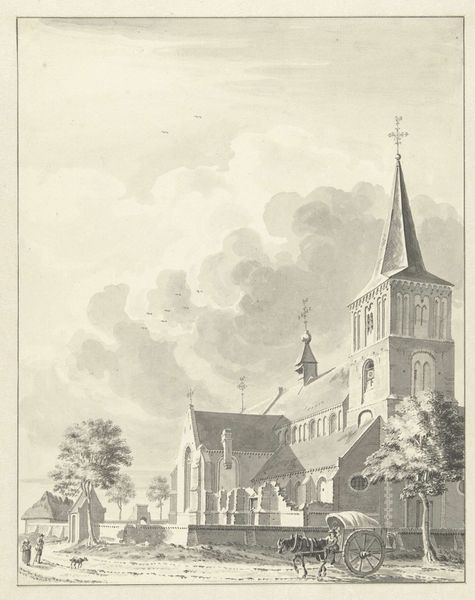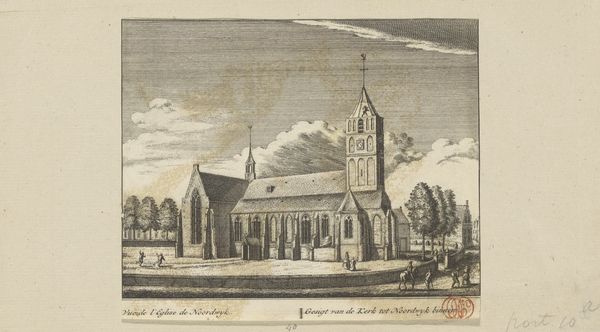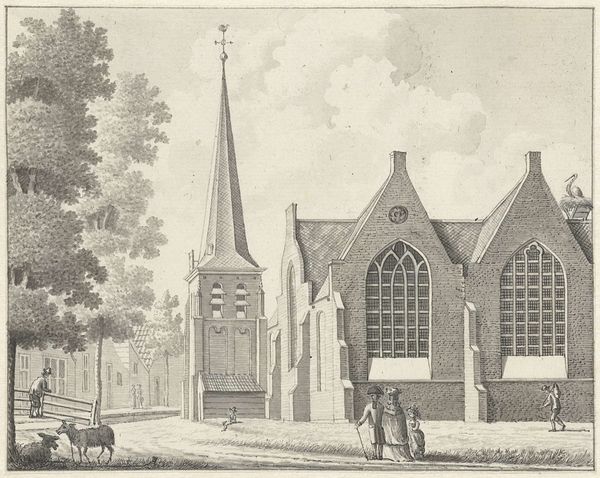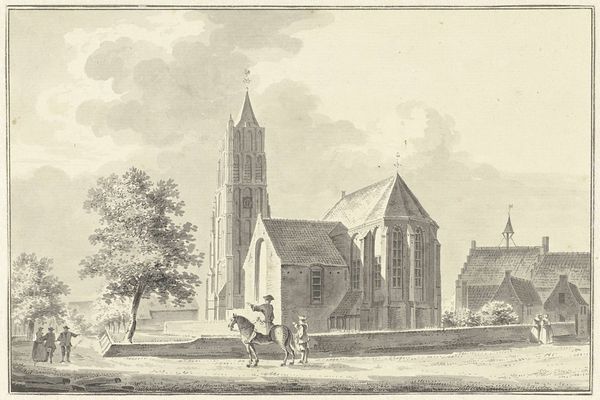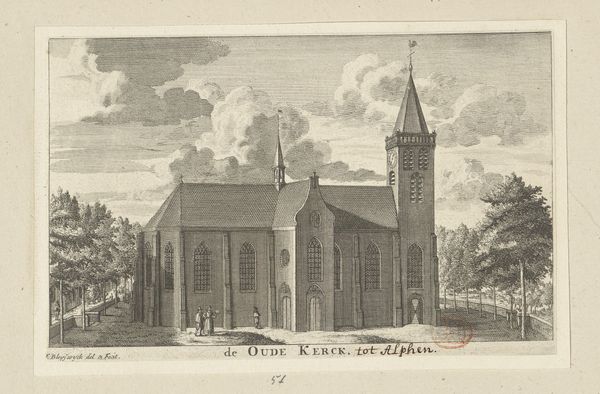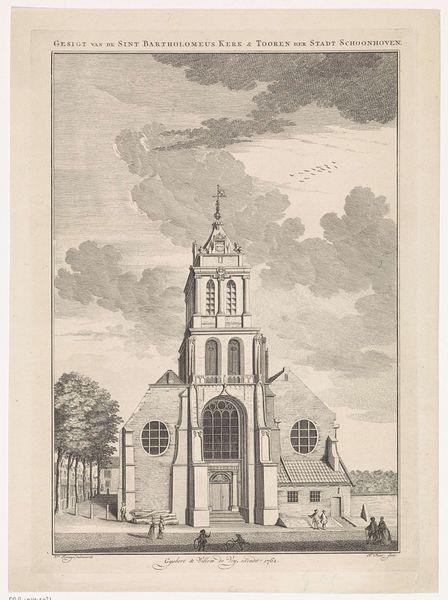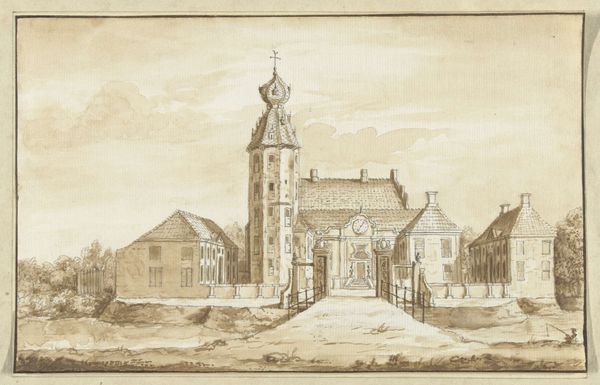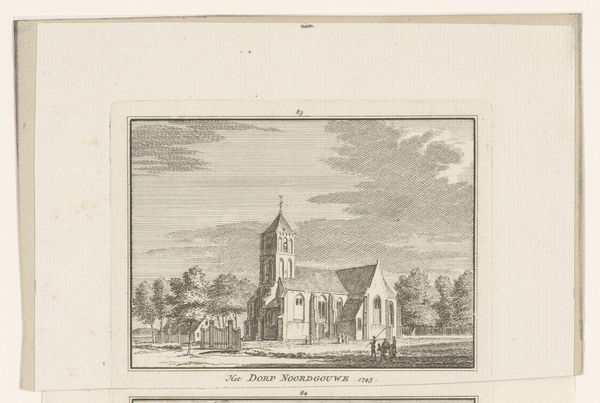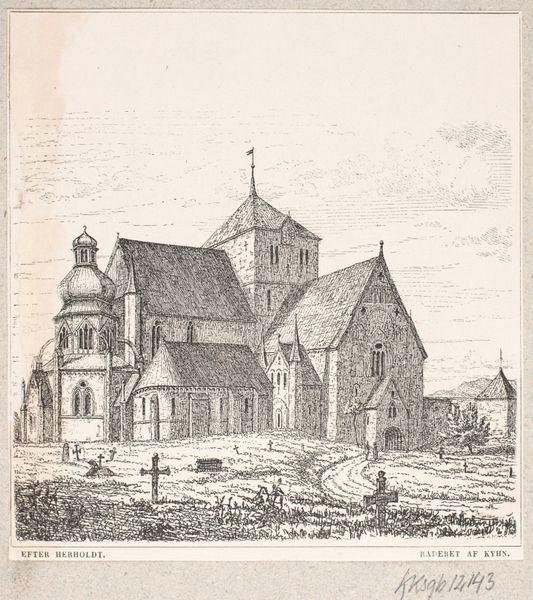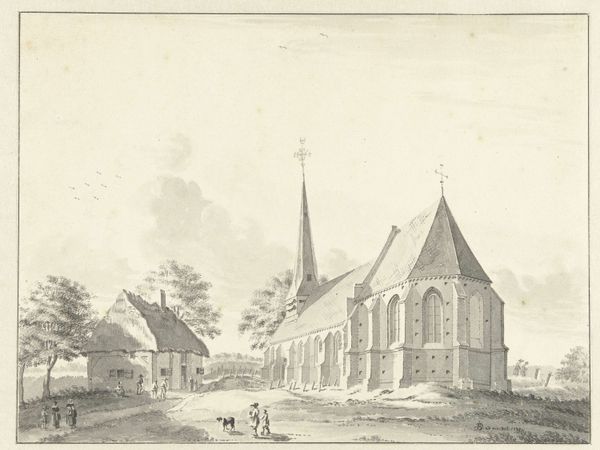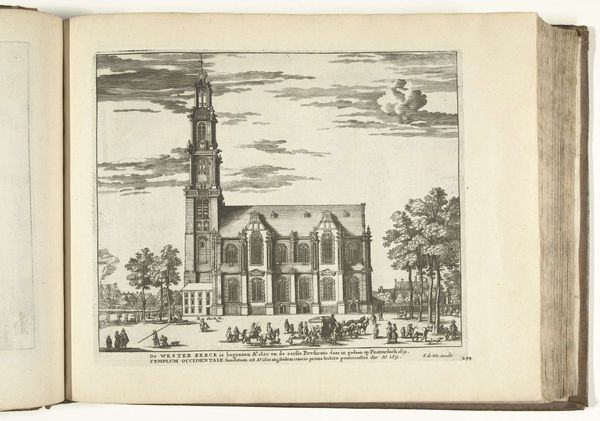
print, engraving, architecture
#
baroque
# print
#
landscape
#
cityscape
#
engraving
#
architecture
Dimensions: height 165 mm, width 110 mm
Copyright: Rijks Museum: Open Domain
Curator: Here we have Hendrik Spilman’s "View of the Church at Purmerend," created in 1757. It's an engraving, currently residing here at the Rijksmuseum. Editor: My first thought is one of precision and care. The fine lines used to create the building give it such depth; the detail is quite remarkable. The neutral palette creates a sense of serenity too. Curator: That serenity speaks to the spiritual power that buildings like these held – not just as places of worship, but also as symbolic anchors for the community, representing stability in an ever-changing world. Churches in the Baroque era signified power, faith and God. The impressive scale reaching for the heavens reflects humanity's relationship with the divine, attempting to touch God's realm on Earth. Editor: Indeed. Considering it's an engraving, I'm curious about the labor involved. How many plates, the time etched for the work, and what the distribution and market for the prints would have looked like at that time. Was Spilman self-funded or commissioned for his efforts? Curator: That's a really pertinent point. The prints served a purpose of spreading the imagery and awareness of Baroque symbolism – enabling these symbols and values to pervade society more deeply, solidifying belief and structure within society through architecture and image. Editor: And how easily were these distributed, reproduced, and sold? Did Spilman profit greatly, or was this more civic-minded than commercial? Thinking of the social impact alongside the visual appeal really brings this piece alive. Curator: Absolutely. Spilman's "View of the Church" offers us not just a depiction of a physical space, but also a glimpse into the cultural and spiritual mindset of its time. Editor: It serves to remind us of how the materiality of a piece affects its accessibility, and the subsequent distribution impacts the socio-political fabric of a period. Art, even a print of a church, always exists within its wider societal web.
Comments
No comments
Be the first to comment and join the conversation on the ultimate creative platform.
